Jay Garrett is bowled over by this monster pre/power amplifier combination…
£22,500 / £30,000
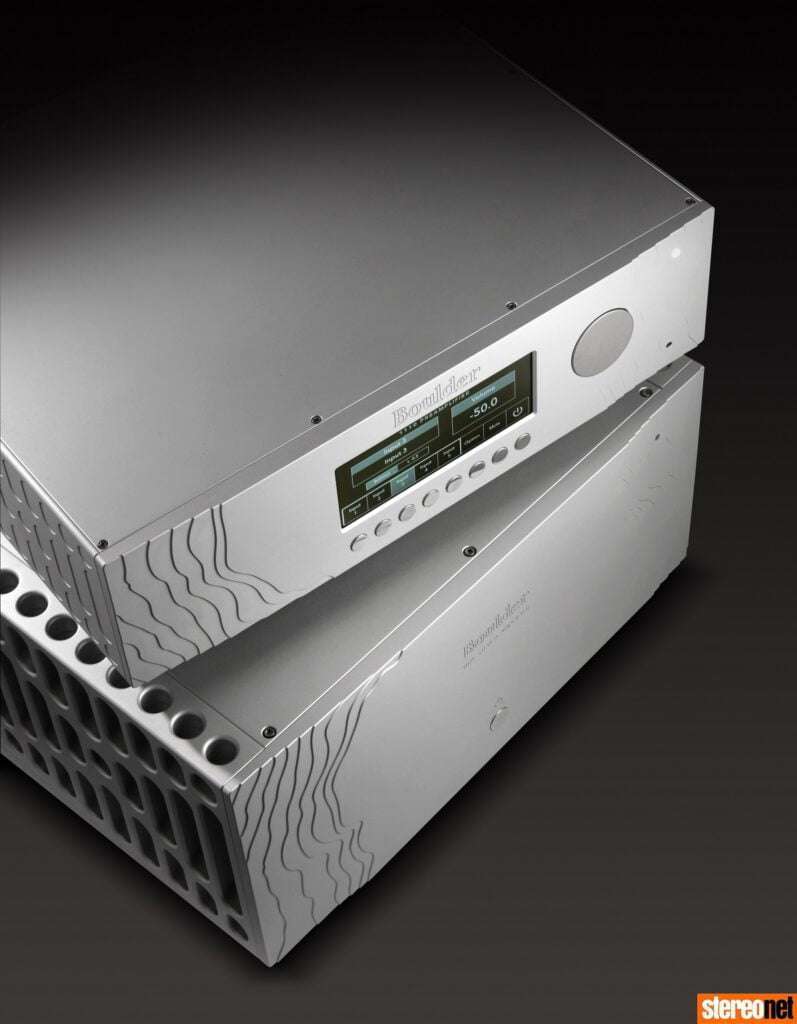
As much a description as it is a name, Boulder Amplifiers originally hailed from – yes, you’ve guessed it – Boulder, Colorado in the United States of America. Now though, the company is located in nearby Louisville, where it has consolidated its reputation for producing world-class hi-fi in house. Under the leadership of Jeff Nelson, who started his journey building custom boards for recording and broadcast studios in the nineteen seventies, Boulder has consistently turned out top-notch pre, power and phono amplifiers – not to mention an interesting integrated and DAC.
A testament to the company’s seriousness is that it doesn’t appear to conform to the usual annual product release cycle. In fact, the preceding 1060 amplifier was launched in 1999, and eighteen years passed by before the £30,000 1160 appeared. Similarly, the 1010 preamplifier had a twelve-year run before the £22,500 1110 took its place. So, while these designs might not exactly be cheap, you can rest assured that if you invest in a Boulder product, it won’t become obsolete within a few years. This is also the kind of company that only releases a new component when it’s significantly better than the one currently on sale, which is not a universal approach within the hi-fi industry, truth be told…
BIG TIME
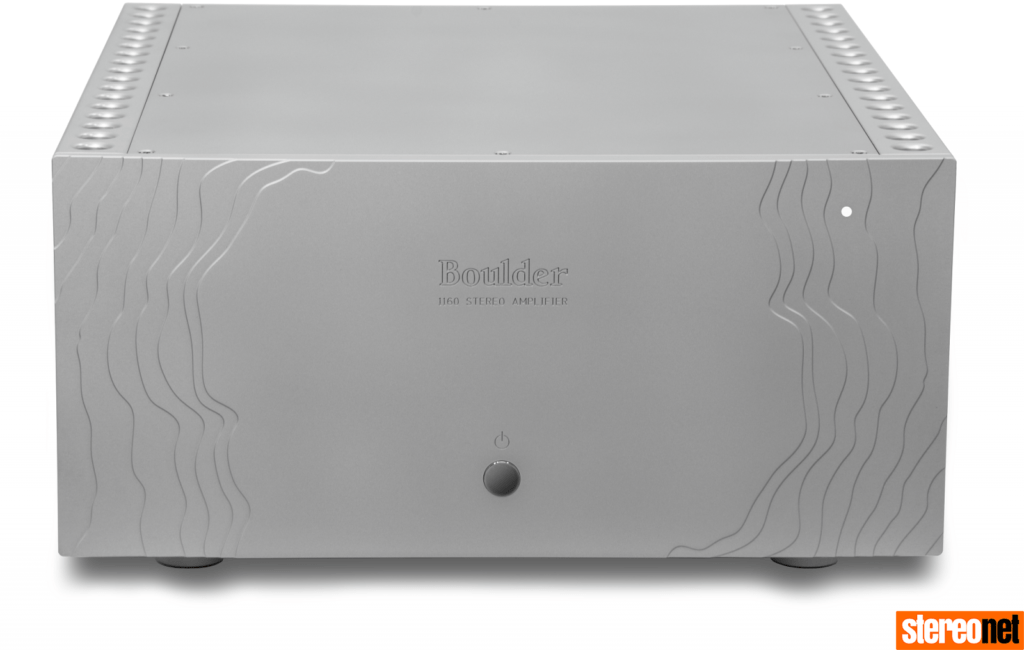
The 1160 Class AB stereo power amplifier weighs a potentially hernia-inducing 61.2kg [only potentially? – DP] or a thumping 97.5kg in its crate; this really does require at least two people to move it more than a few inches, unless you’re a fan of hospital food. Having almost done themselves a mischief by shifting it, the purchaser can at least take comfort in the massive amount of power now available in their listening room. It’s rated at a plaster-cracking 300W into 8 ohms, 600W into 4 and 1,200W into 2…
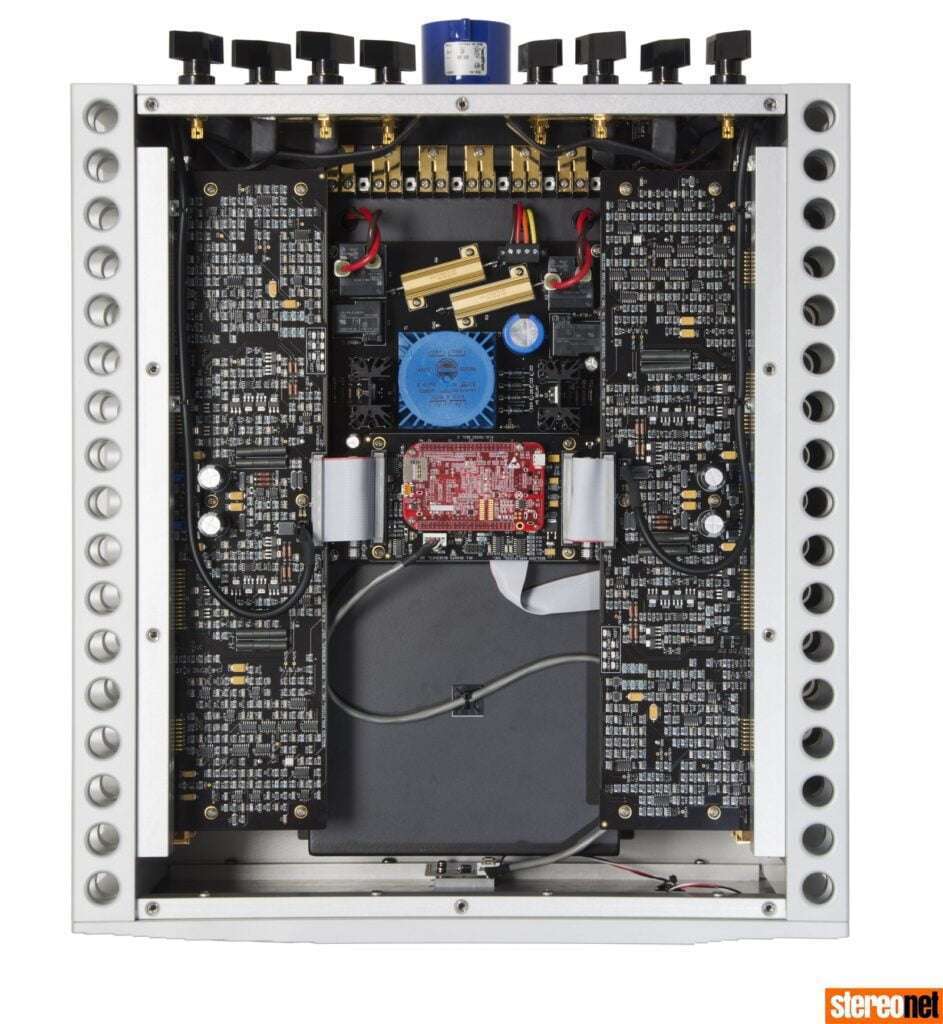
Peek inside the hefty CNC’d casework and you’ll find dual power transformers that are DC filtered, and enclosed in a welded steel case said to provide entirely silent operation. Additionally, Boulder tells me that the 1160 uses a new grounding system, and fully-balanced circuit design to improve clarity and reduce distortion. The output stage uses no less than fifty-six power transistors – hard to argue with, considering that some amplifiers get away with just four!
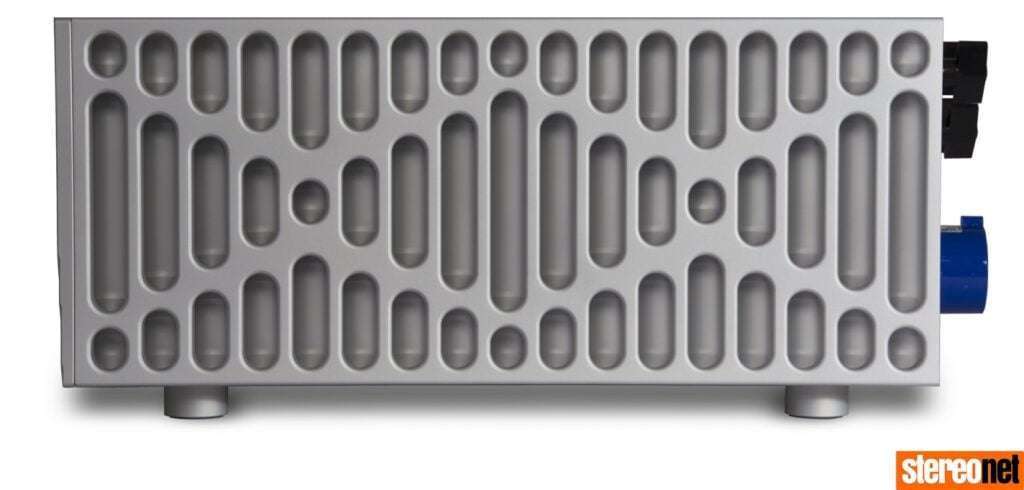
The rear of this vast amp is given over to two sets of biwirable speaker posts that only take spade connectors – this is bound to annoy some people. Boulder loves balanced, so both amplifiers exclusively use XLR connections and, save for the chunky power switch – which can be left on “for years” according to the manual – and an Ethernet port, that’s everything of note back here. The sides of the 1160 are handed over to Brutalist heatsinks reminiscent of Bristol’s Prince Street Car Park, which is no bad thing as far as I’m concerned!
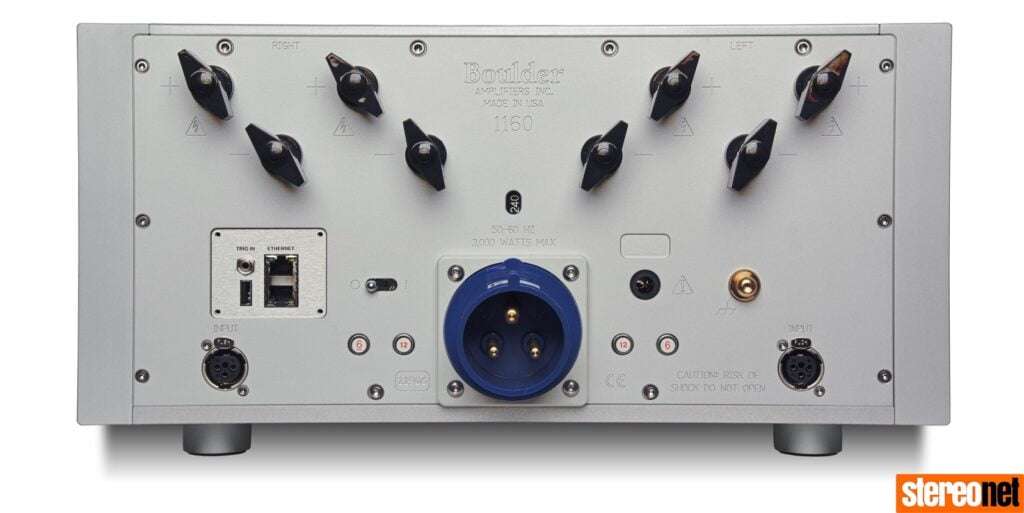
Regarding that Ethernet port, both the 1110 and 1160 make use of an ARM processor, with the latter employing it to manage power, protection circuitry and communications. By contrast, the preamp uses it for online firmware upgrades and enables remote troubleshooting. Handily, you can name the inputs for your sources by entering the preamp’s IP address in your browser; here you can also make settings adjustments, which is all very simple.
BOULDER-ER
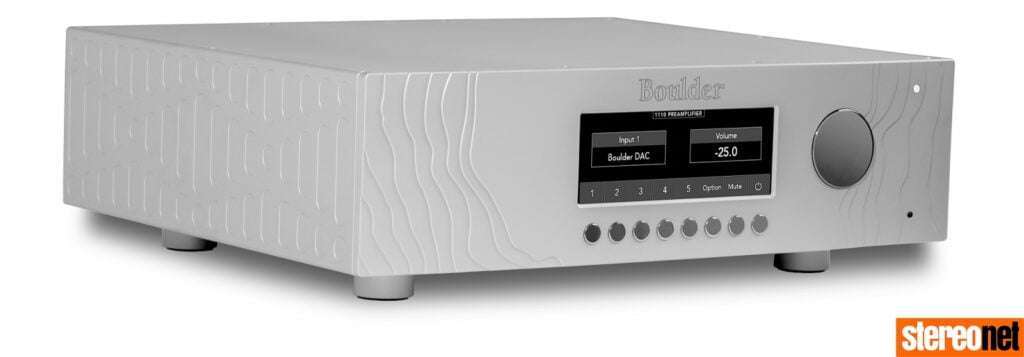
With its five sets of balanced XLR inputs, the 16.3kg 1110 is designed to form the heart of any serious system. Boulder’s aim with this product was to bring the resolution, clarity, and dynamic and transient speed achieved by the upper-tier 2100 and 3000 series to the 1000 line. Interestingly, this revision also saw the phono stage end up on the cutting-room floor. Instead, the company offers vinylistas the chance to buy separate units from its catalogue – such as its 1108, or even the 508.
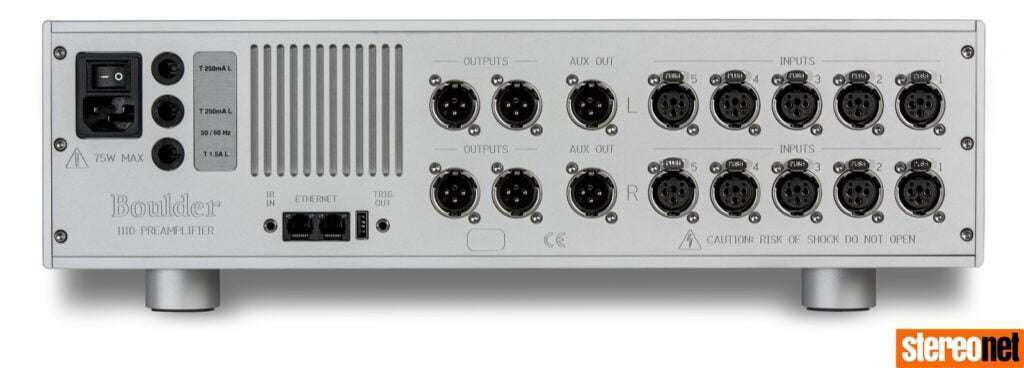
Like the 1160, the beautifully CNC’d casement of the 1110 is rock-solid and mirrors the patterns of the power amplifier’s heatsinks down its sides. Inside, the preamp boasts full surface mount circuit board architecture, manufactured on Boulder’s own precision pick-and-place machine. The dual-mono audio boards isolate left, and right channels for optimal stereo separation in a single-chassis design says the company. Volume control comes by way of a balanced version of Boulder’s own analogue potentiometer, descended from the 3010 pre.
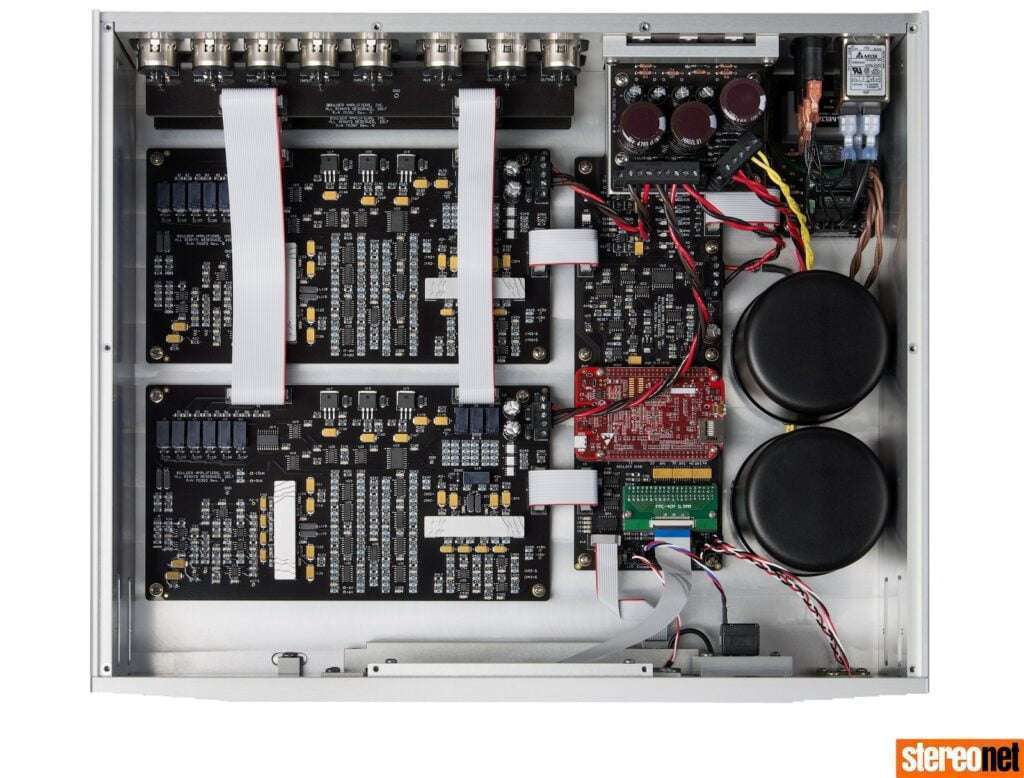
One lovely and highly unexpected aesthetic touch is that the fascia of both pre and power amps line up to form a CNC’d topographical map of Flagstaff Mountain, located near you-know-where! The preamp sports a clear LCD screen that displays input selection and volume, below which are eight polished control buttons used to switch inputs, power on/off, and perform other operations. To the right is an equally shiny volume dial that offers a 100 dB range divided up into 0.5 dB steps.
SOUND QUALITY
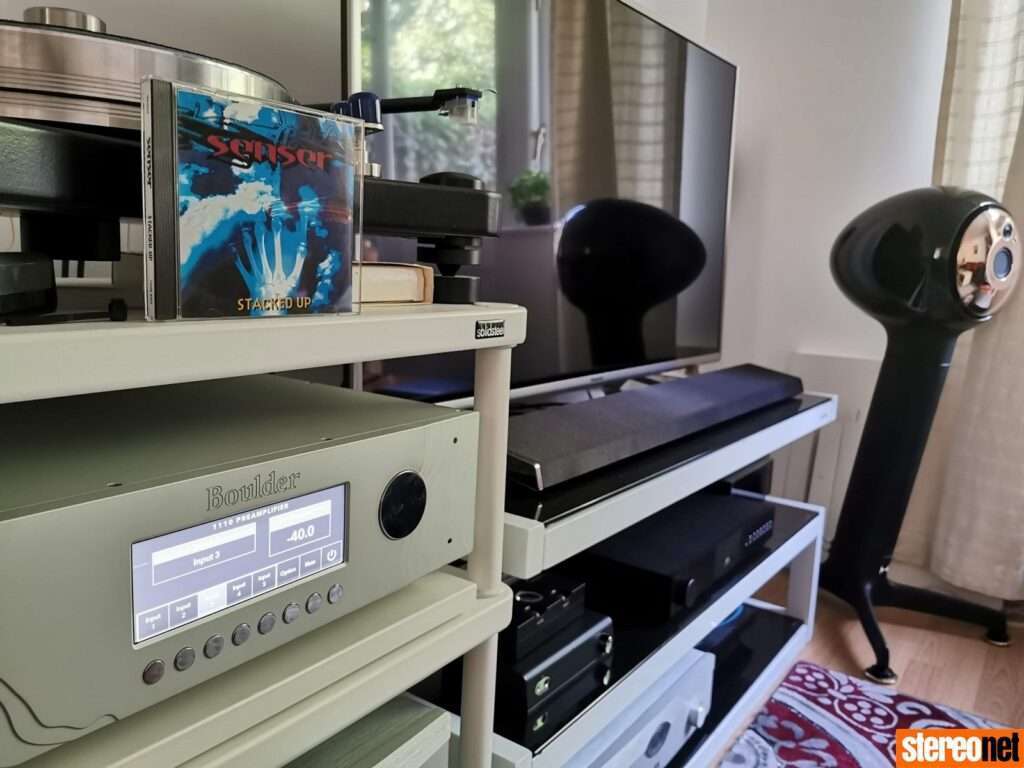
The 1110 and 1160 are a formidable double-act – the brains and the brawn if you like. Both sound like they mean business in a no-nonsense way, with the 1110 being the nerve centre and the 1160 the muscle, with its seemingly limitless punch and power. Together this monster high-end combo can take on even the most power-hungry loudspeakers without breaking into a sweat. Moreover, you get dynamics and soundstaging good enough to make similarly priced McIntoshes shift awkwardly in their seats.
By the time these American big-hitters landed in my listening room, I had already spent a few weeks with Node Audio’s Hylixas. Attaching the Boulder power amplifier to the high-tech Cambridgeshire speakers using Tellurium Q Ultra Black cables brought a further dimension to their already impressive performance. The Boulder amps left the YBA Passion integrated in their wake – understandable when you take into consideration the price difference. However, it’s not just a case of lots of extra money buying increased performance. This Boulder pairing is also eminently musical whilst lacking in any particularly noticeable sonic signature – something that’s well worth remembering, given just how visually conspicuous this dynamic duo is.
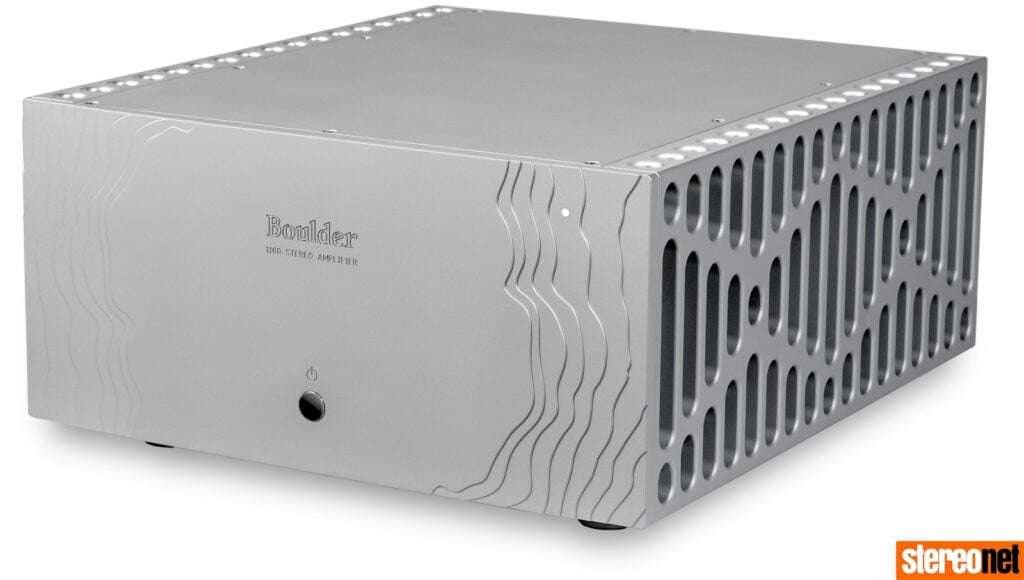
Streaming the Sound City album through my Oppo UDP-205 disc spinner using Qobuz via Roon, and the sound of the live room in Dave Grohl‘s studio as the reverb rang out on every snare drum strike on Mantra was natural. The sharp attack, resonance and following decay were faithfully captured in my listening room. Those harmonised vocals of Grohl and Trent Reznor were beautifully rendered with an organic timbre, proving that these Boulder amps do a great line in honesty – but this doesn’t bode well for poorly pressed or recklessly recorded material, as this combo leaves nowhere for substandard sonics to hide.
Why So Serious? from The Dark Knight outlined the Boulders’, low-frequency love. Even through the Hylixa – not as generous as some big boxes when it comes to bass – the sub-bass was still very much present and correct. Meanwhile, an octave or so above, the upper bass remained taut, and this melded into a midband that keeps everything coherent – even in a purposely angular and tense track such as this.
Indeed these big Boulders do such a remarkable job of getting out of the way, that they shine a big spotlight on differences between other components. Naturally, I could already discern the characteristics of my moving coil cartridge in comparison to the moving iron design bolted into the tonearms used with my VPI Prime. However, the Boulders, aided by a YBA Passion PH150 phono preamp, used a dayglo marker to highlight every nuance, for better and for worse. It is perhaps this neutrality that lends this muscular combo its sense of surefootedness and organic, naturally live feel.

Such steadfastness shouldn’t be dismissed lightly. This pairing might have the bulky physical presence of Dwaine ‘The Rock’ Johnson and Dave Bautista sat in your room, but it shows Muhammad Ali‘s deft “fly like a butterfly, sting like a bee” approach to music-making. Queen‘s Brighton Rock proved not only that these amps could pick their way through the heavily saturated backing to Freddie‘s vocals, but also keep up with Brian May‘s iconic guitar solo. The track uses May’s Vox AC30 amps for a stereophonic question-and-answer session via an Echoplex tape delay machine, and the result was a display of guitar godliness. The Boulder combo made the guitar solo sound intimate and vast at the same time.
I found that this pairing dropped the listener right into the control room for a personal performance, as every nuance of the piece was laid before the listener. Yet the scale of the Boulder’s soundstage had me enveloped in those tape-delayed riffs. Brian May‘s love of using the rasping edge of a sixpence when needing extra expression could easily be heard among all the other details here, as these amplifiers also grandstanded their agility and speed. Additionally, in both the Queen and the Sound City tracks, snares had a wonderful snappiness to them, highlighting the crisp attack produced by the potent 1160.
Vocals really benefit from the Boulder combo’s pure-as-the-driven-snow midband. Whether it’s the crystalline Kate Bush, snarling Patti Smith or the dourly emotive Michael Stipe, one thing rang true throughout – the sense of “being there”. Things never appeared forced or overly lit, but still had body and presence; there was an inherent truth to the performance. Together, these amplifiers produce a wonderfully open and detailed sound without needing to overdo the upper midband or treble. There’s plenty of detail in the lower midband and upper bass, and the result is that the music never gets strident. There was no sense of overdoing the upper octaves to get more apparent detail out of recordings. Instead, this dynamic duo delivered untroubled power with a finely judged tonal balance.
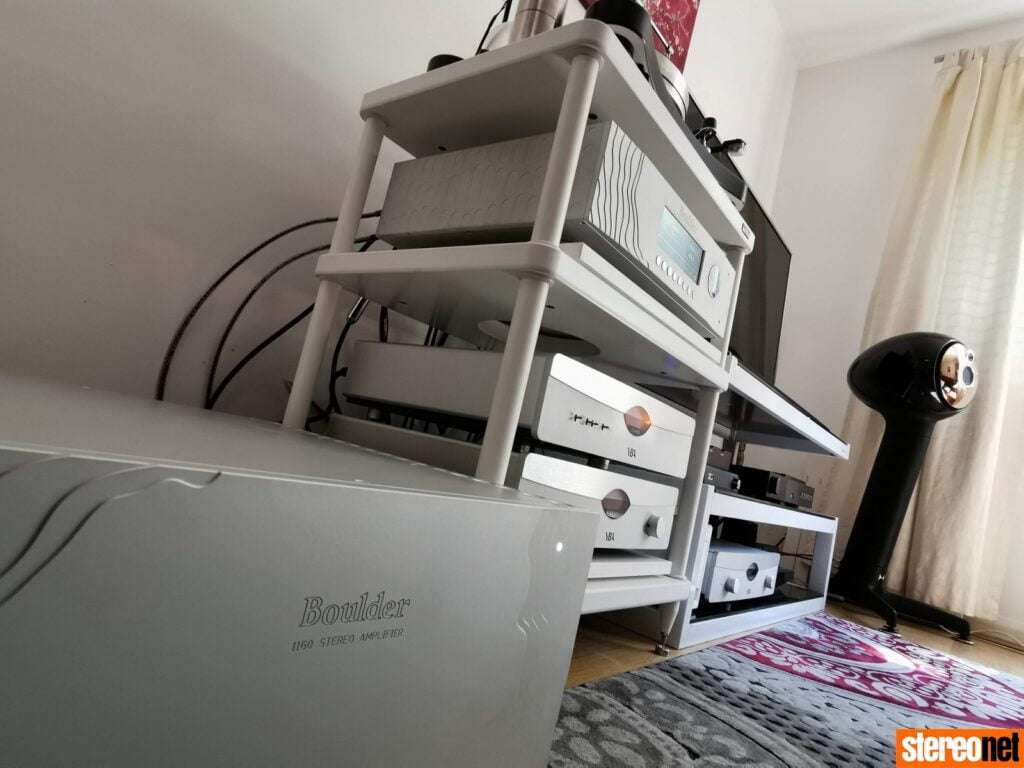
Range and power were both in evidence with Queensryche‘s Speak. Geoff Tate‘s vocal range, along with the driving pace, never once left the Colorado team lagging or breathless. Instead, the listener was treated to a plentitude of power and detail, and the requisite live dynamics one craves from a studio-recorded heavy metal album. Scott Rockenfeld‘s drums had bite and punch, and no matter how hard he tried to shake them loose, the Boulders were there on every beat. I loved the way they kept pace with Eddie Jackson‘s tight and tasteful basslines, showing serious rhythmic grip. They showed grace under pressure, as the notes relentlessly flew by.
That’s not to say the 1110/1160 can’t do subtle and nuanced. Change the programme to piano-led jazz or even dynamic orchestral sounds, and the Boulders follow the conductor or band-leader faultlessly. Spinning my limited edition anniversary pressing of Vince Guaraldi Trio‘s Peanuts, and these amps simply allowed the notes to flow.
Soundstaging proved eerily insightful. Dropping the needle on more spacious orchestral works gifted me with a natural presentation married to an expansive recorded acoustic. This reminded me just how flexible this set up is. For example, one moment it feels like it’s just like you and Brian May in a room, and the next moment you’re on the fourth row of The Royal Albert Hall, taking in the atmosphere as well as the performance itself. In neither instance do you sacrifice any sense of musicality or authenticity to the original recording; these amps instinctively know when to go large, and do so effortlessly.
THE VERDICT
First impressions count, but you should never judge a book by its cover. To the uninitiated, Boulder’s 1110 preamplifier and 1160 power amplifier might appear to be thuggish bouncers with plenty of power but little finesse. Yet, that’s bang out of order because not only is this combination musical, it’s also graceful when called upon so to be – it can caress as well as kick-ass, as the Americans would  say. Little is demanded from the listener, aside from a decent front end, good source material and some balanced XLR cables to get going.
say. Little is demanded from the listener, aside from a decent front end, good source material and some balanced XLR cables to get going.
If you are looking at pre/power amplifier combinations at this rarefied price point, then the chances are that you’re searching for your final, “end game” choice. If that’s the case, and you have decided that you want something with transparency and poise as well as seemingly endless power – then make sure you hear this rock-solid combo.



